The tale of Lakshman Ji’s Jal Samadhi (water immersion) is narrated in the Uttara Kanda of the Ramayana, showcasing the final phase of his life and exemplifying his unwavering commitment to dharma (duty) and promises. This poignant story reveals the profound depth of his sacrifice, dedication, and brotherly love, offering timeless lessons about loyalty and righteousness.
Background:
After the victorious conquest of Lanka and Sita Ji’s Agni Pariksha (trial by fire), Lord Rama returned to Ayodhya and was crowned king, ruling as an ideal monarch. Lakshman, who had stood loyally by Rama throughout their exile in the forest, continued to be his trusted aide and advisor in Ayodhya. His role transcended that of a brother; he was also a protector, friend, and devoted servant.
Arrival of Yamaraj and the Oath:
One day, Yamaraj, the god of death, came to Ayodhya to hold a confidential discussion with Lord Rama. He requested Rama to keep their conversation strictly secret and warned that any third person who eavesdropped or interrupted would face death as punishment. Lord Rama agreed to this condition and appointed Lakshman as the gatekeeper, instructing him not to allow anyone inside under any circumstances.
The Visit of Sage Durvasa:
During the secret meeting between Yamaraj and Rama, the famous sage Durvasa arrived at the palace. Known for his quick temper, Durvasa expressed his urgent desire to meet Rama immediately. Lakshman tried to explain that Rama was engaged in an important discussion and refused entry to anyone. However, Durvasa threatened to curse Ayodhya and the entire royal lineage if he was denied entry.
Lakshman’s Dilemma:
Lakshman found himself in a grave predicament: either obey his brother Rama’s order and risk Durvasa’s curse on the kingdom or allow Durvasa inside and break the sacred vow. Prioritizing the welfare of the kingdom and its people, Lakshman permitted Durvasa to enter, fully aware that this decision might endanger his own life.
Rama’s Moral Conflict:
After the meeting concluded, Rama learned about Lakshman’s decision. According to the vow, Lakshman was to be punished by death for allowing a third party inside. The thought of punishing his beloved brother caused Rama deep anguish. After consulting his ministers and priests, Rama was advised that renouncing a loved one could be as painful as death itself. With a heavy heart, Rama resolved to renounce Lakshman.
Lakshman’s Jal Samadhi:
Heartbroken by Rama’s decision, Lakshman felt his earthly purpose was fulfilled and that it was time to free himself from worldly bonds. He decided to take Jal Samadhi (water immersion) on the banks of the Sarayu River. This spot is traditionally believed to be near the Sahastradhara Ghat in Ayodhya, where today stands the Lakshman Kila temple. There, Lakshman returned to his cosmic Sheshnag form and merged into the water, ending his mortal existence.
Spiritual Significance of Jal Samadhi:
In Hindu philosophy, water is regarded as a purifying and sacred element. Taking Jal Samadhi is believed to hasten the soul’s liberation (moksha), as the body dissolves back into the five fundamental elements. For saints and sages, Jal Samadhi is a revered practice allowing their divine energy to spread throughout the cosmos.
Rama’s Own Jal Samadhi:
Following Lakshman’s Jal Samadhi, Rama himself chose to conclude his earthly life. He took Jal Samadhi at the Guptar Ghat on the Sarayu River and departed to Vaikuntha, the divine abode. This profound episode highlights how both brothers remained steadfast in their dharma and duties until their very last moments.
Reflections:
The story of Lakshman’s Jal Samadhi teaches us about his unbreakable loyalty to dharma and promises. He placed his kingdom, subjects, and brother above all, even at the cost of his own life. This tale deeply resonates with the values of sacrifice, duty, and brotherhood—principles that remain relevant and inspiring to this day.

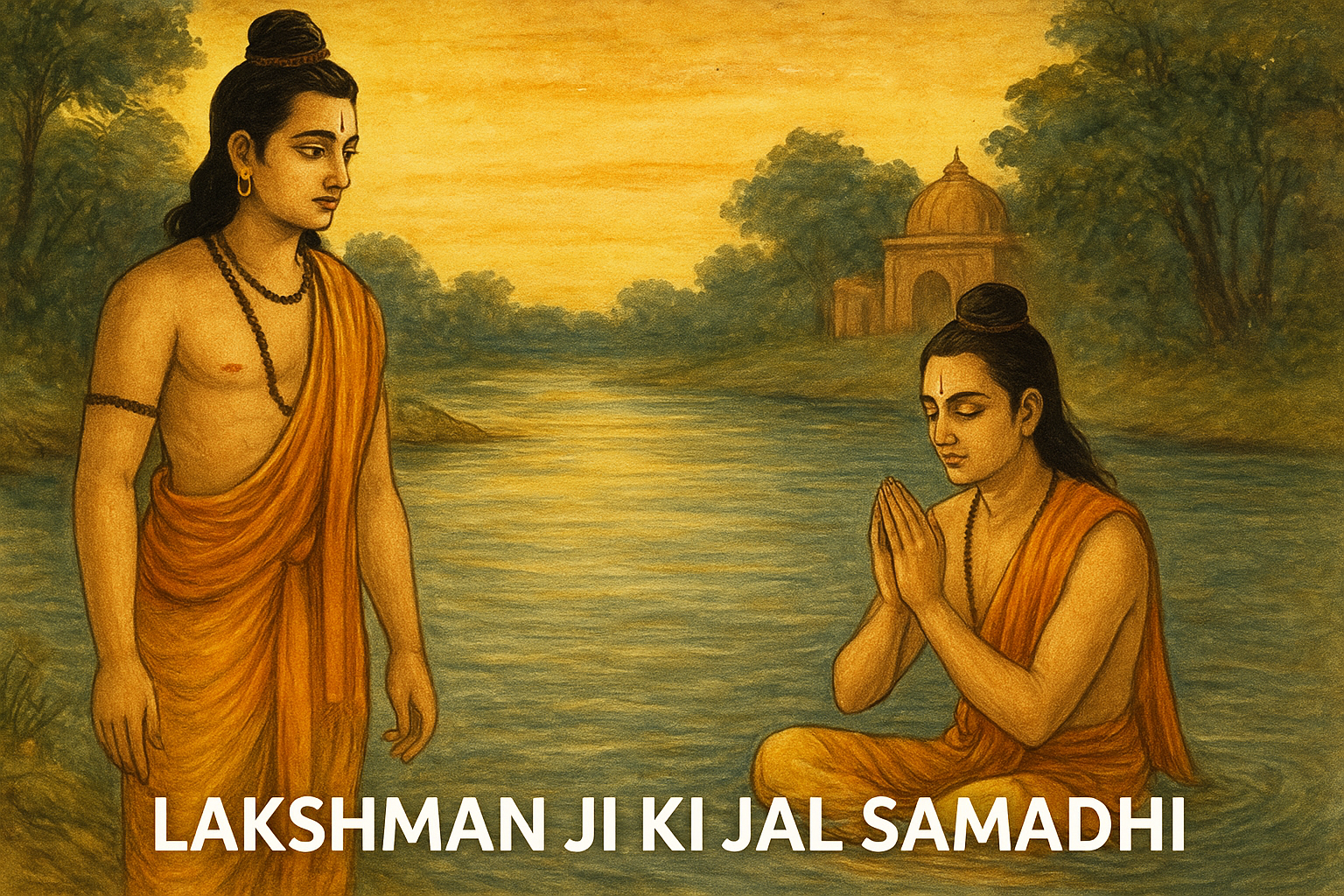

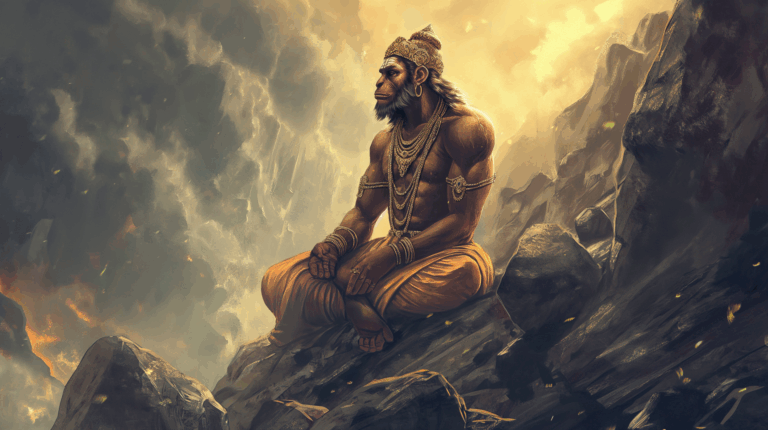

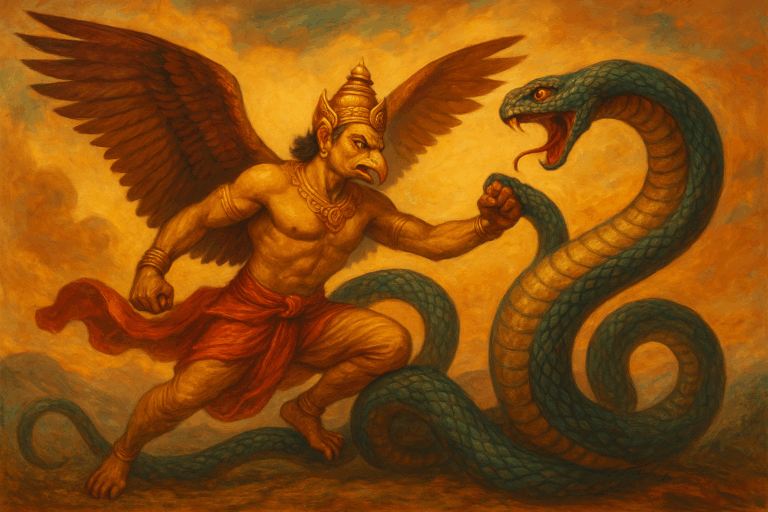
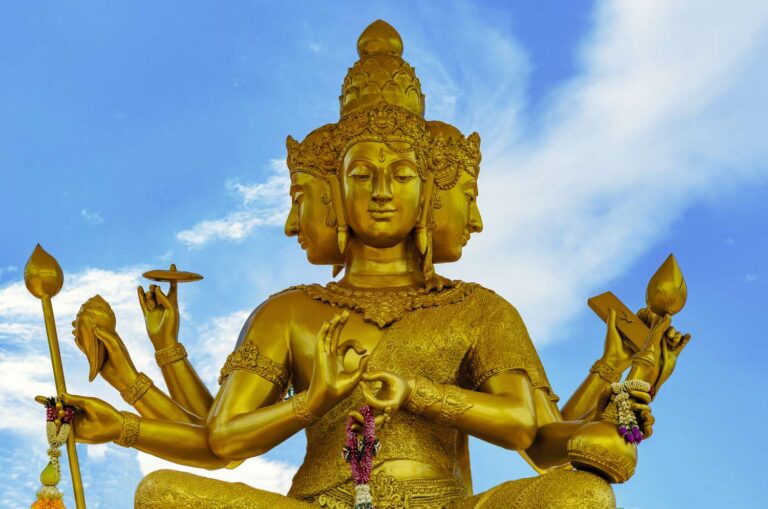
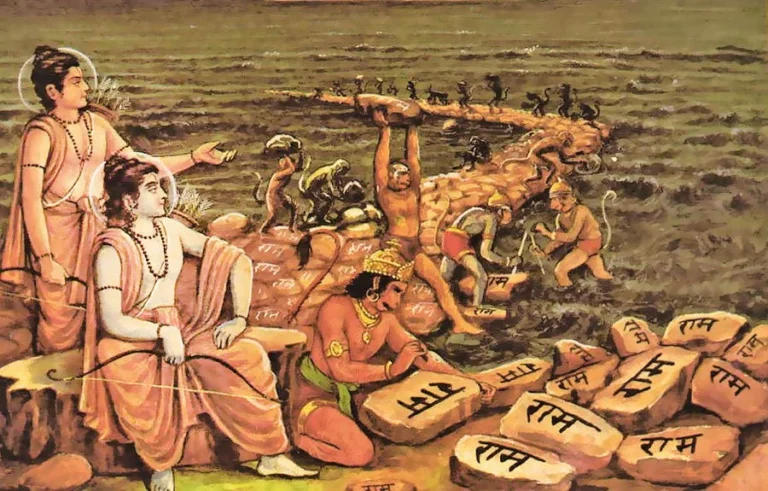
Laxmanji is considered as greatest sevek of shri ram.Thanks for sharing story.